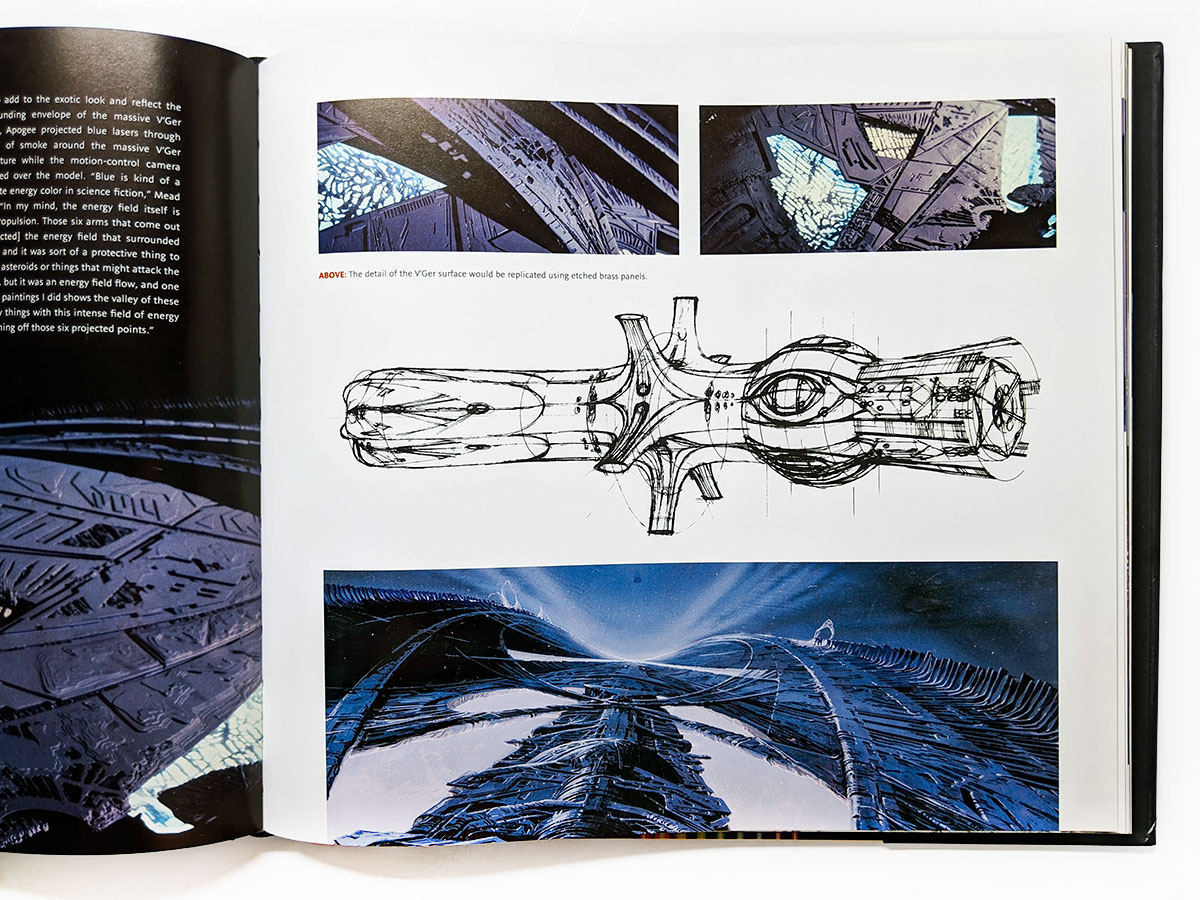Star Trek has certainly cornered the market in recent years on comprehensive coffee table books and reference tomes, and with the September release of Star Trek: The Motion Picture: Inside the Art & Visual Effects, the franchise is again seeing its history preserved and celebrated in ways one could only dream.
Long celebrated by many as a misunderstood classic, Star Trek: The Motion Picture is well-known for its stunning visual style and the turbulent work that translated that vision to the screen.
In this beautiful, oversized book written by Jeff Bond and Gene Kozicki, the duo expertly carve through 40-plus years of history, anecdotes and images to weave both a familiar cataloging of the film’s production history, as well as some new takes on how it all came together.
The 192-page book is divided into nine easily digestible chapters focused on various elements of the film. From designing the refit Constitution-class Enterprise and V’ger to showcasing Vulcan on the big screen for the first time, the research and historical framing of the work is superb.
One of the more interesting elements in the book is the authors’ attempt at “rehabilitating some of the reputation” of Robert Abel & Associates, who are known in the annals of Trek as the visual effects house that basically couldn’t get the job done originally. The book goes into detail on hiring of Abel — who had gained some notoriety for his original work on a Levi’s commercial (photos included! — but was clearly not equipped to upscale his work to the magnitude required for The Motion Picture.
Known as ASTRA (‘A Star Trek Robert Abel’) his group was eventually replaced by the famed VFX legend Douglas Trumbull, along with John Dykstra’s company Apogee — who were left with an impossibly short runway of about 10 months to produce the high-concept effects required to tell the film’s ambitious story.
Abel & Associates are lauded by the authors for the storyboarding and design work that was utilized on the film, but the attempt at rehabilitating their reputation was a tall task in the face of Robert Abel’s work being described by associate producer Jon Povill as “an endless song and dance that he’d be up and running in one more month.”
Ultimately, Povill’s account of director Robert Wise leaving their final meeting in January of 1979 saying, “I want that guy off the show. I never want to see or talk to him again,” is pretty damning in the case for reputation rehab.
That is but one behind-the-scenes anecdote in a book packed with them, as well as literally hundreds and hundreds of photos from the fabled production team at work beating deadlines and creating an artistic vision that has stood the test of time. From candid snapshots to frame-by-frame storyboard art, the book is a feast for the senses.
One of the standout elements in the book includes a 63-photo, 20-page spread on “V’ger’s Temple” that focuses on the creation and design of Star Trek’s original saucer section walk and the exploration of V’ger’s secrets. The model work and design of the hexagonal pathway for the crew connecting from the Enterprise hull to V’ger’s core is impressive to see in its evolving forms.
Other standout imagery in the coffee table book includes:
- Multiple behind-the-scenes photos of the Enterprise refit model being filmed in drydock
- Art and model work detailing V’ger concepts from early days to finish product, including the abandon memory wall sequence
- Concept art, behind-the-scenes photos and set schematics of the Klingon bridge sequence early in the film
The book also includes an introduction dissecting the “Aborted Launch” of Planet of the Titans and Star Trek: Phase II (which is also extensively covered it the great 1997 Star Trek: Phase II – The Lost Series publication).
To say this book is comprehensive would do it a disservice.
In the end, Star Trek: The Motion Picture – Inside the Art & Visual Effects is a fully-realized history of the oft-misunderstood classic film that paved the way for Trek’s ongoing (and seemingly never-ending) legacy.
![]()
Jim Moorhouse is the creator of TrekRanks.com and the TrekRanks Podcast.
He can be found living and breathing Trek every day on Twitter at @EnterpriseExtra.









